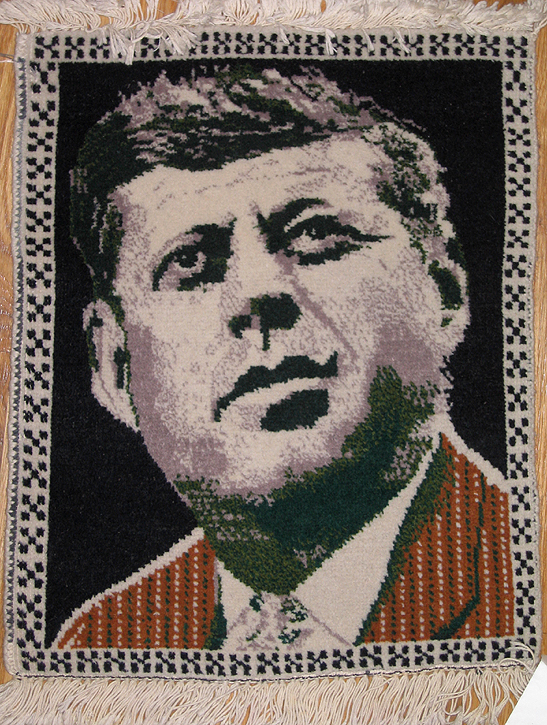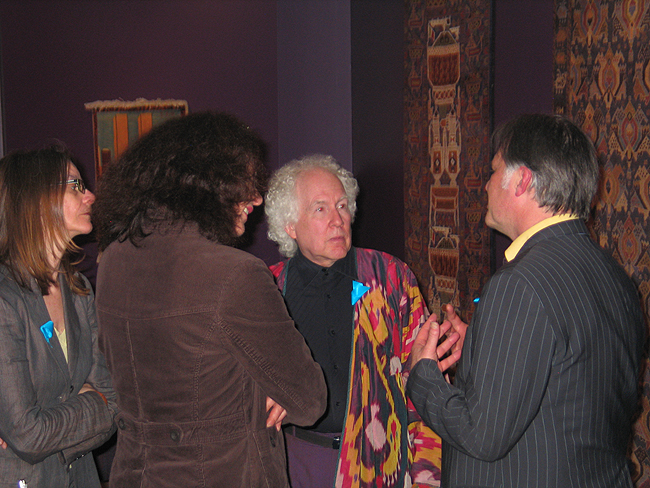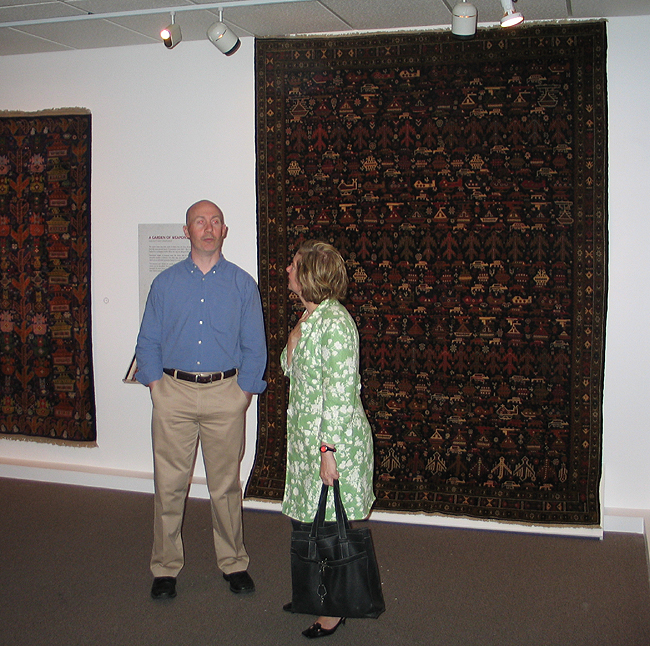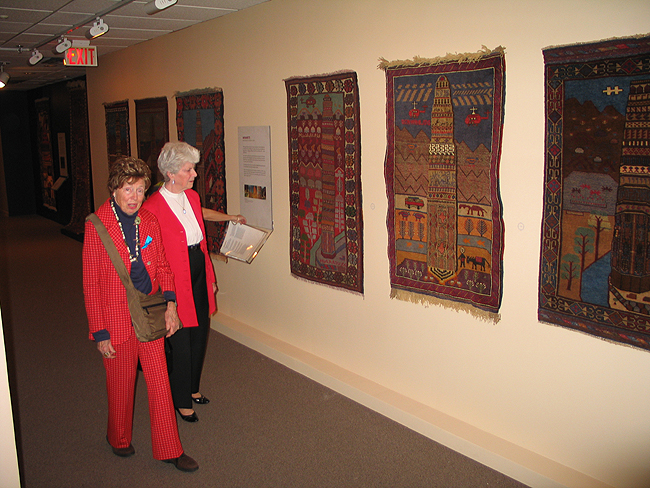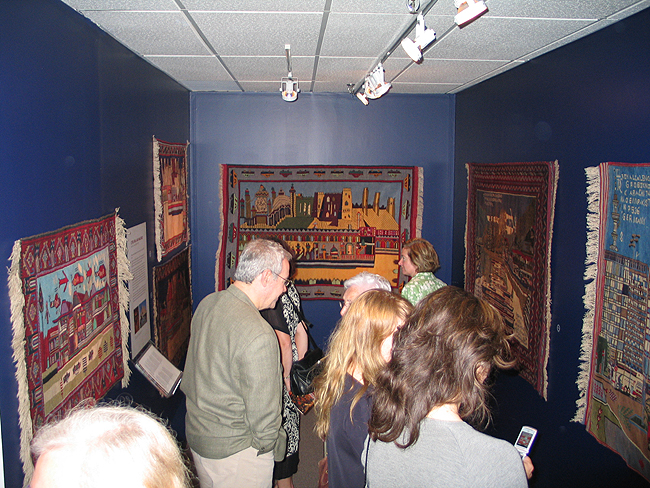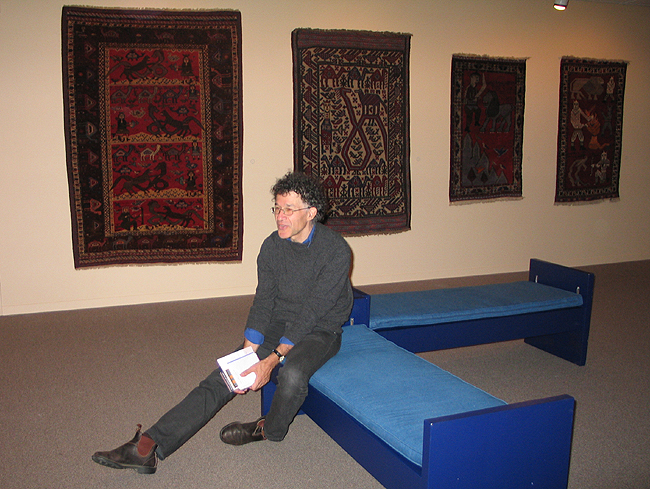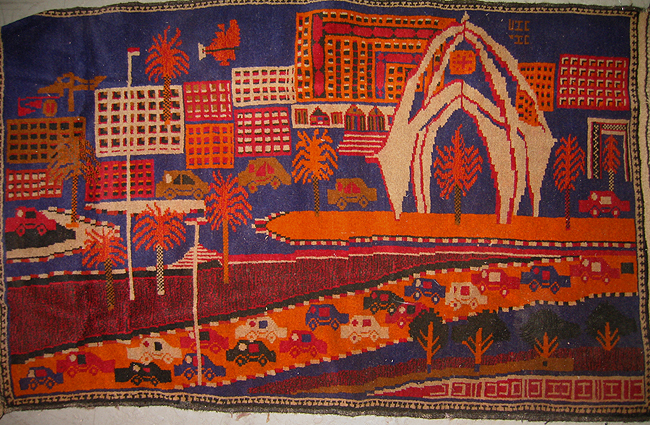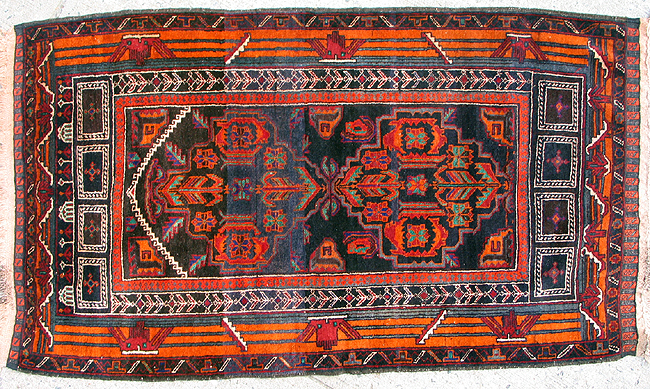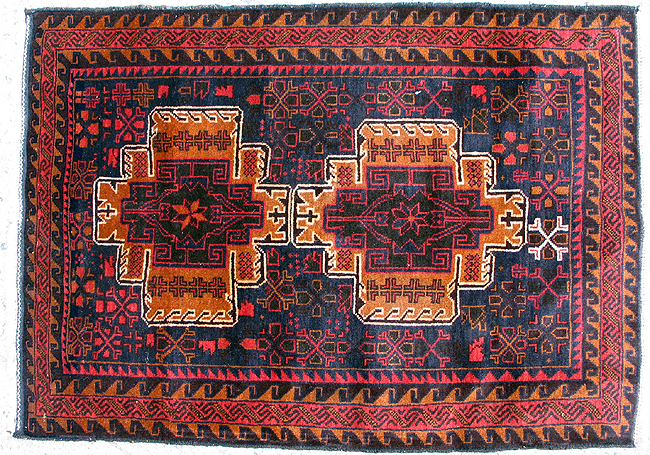Yesterday, David Pescovitz posted a link on BoingBoing to a John F. Kennedy Rug similar to this one:
Indy Video Featuring Kevin Sudeith at the Brooklyn Flea
Video: embed removed March 22, 2024 to remove unwanted and unwelcome javascript
Last spring Indy Video visited me at the Brooklyn Flea on Lafayette and Vanderbilt in Fort Greene, and they produced this very informative video about war rugs. It is well shot, edited, and produced. It will air in NYC on Tuesday, 9/16 at 8:30 PM on channel 67, Thursday, 9/25 at 9 PM on channel 34, and Wednesday, 10/8 at 3:30 PM on channel 34.
World Trade Center Rugs Discussed on PRI’s The World
Yesterday while listening to WNYC, my local NPR station, I heard an interesting story about about Afghanistan seven years after September 11, 2001. The story features an Afghan describing a World Trade Center Rug available on Chicken Street in Kabul.

-image from theworld.org
Here are some 9-11 Rugs with and without flag banners.
Iron Age Italian Petroglyph of Loom
Canada’s Textile Museum War Rug Show
A highpoint of my interest in war rugs was attending the opening of Max Allen’s collection of war rugs at Canada’s Textile Museum. Max and everyone at the Textile Museum have developed an excellent war rug database. It has structural data, very good descriptions, and excellent photographs. Bravo!
Toronto is a beautiful and interesting town. I visited a well styled and eclectic independent bookstore called The Monkey’s Paw.
Commencing our tour, Max commended this rug as best of all:

The contenders for my favorite are:



This, truly gorgeous rug, is most historically important:

I talked to Tim and Max about my theory of the “Feedback Loop” specifically regarding this rug:

this group of rugs:

and these Mas’ud rugs:

Max’s guided Tim and me through the galleries. His analysis was animated and very well informed. Succinctly, Max focused on our lack of specific answers to four questions: Who made the rugs? Where were they made? When were they made? What do they mean?
More posts about this show soon…..
Canada’s Textile Museum Opening
(l-r) Sarah Quinton, Nataley Nagy, Max Allen, and Fourth Estate member representing The National Post.
The artist Richard Johnson whose drawings were on display standing in front of “The Mother of All War Rugs”.
Jam Minaret gallery.
Excellent gallery of pictorial rugs, including “Calendar” rugs.
Tim Bonyhady in Rustam gallery.The rug at left is a great beauty.
Press coverage of the show:
TheStar.com
The CBC
The National Post
On News Stands Now (but not online)
Shayaad Square Image Update
After watching super exciting videos of people driving around Herat and being inspired by a *comment* I am revising my earlier post about the source of this image:
Rather than being Shahyaad Square it appears to be a traffic circle in Herat built in the last 5 years.
Here are some screen shots from youtube.
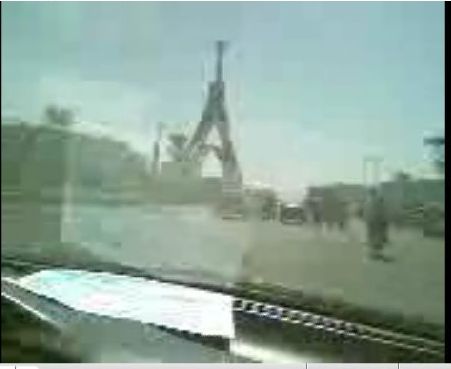
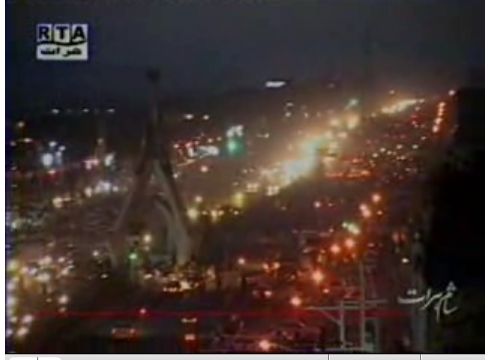
Textile Museum of Canada’s War Rug Show
Textile expert and war rug aficionado Max Allen has curated an exhibition of his war rugs at Canada’s Textile Museum which opens April 23. There is a story today from Reuters about the show.
“It’s hard to tell what a particular rug is supposed to mean when its history is hidden and its maker is unknown,” said Max Allen, the curator of the exhibit.
“What’s left are the rugs themselves — eloquent anonymous documents of a world turned upside down,” he added in an interview.
….For Allen all of the rugs are important cultural documents about the events that occurred in that part of the world.
“There’s never been anything like them before and they are war from the ground up,” he said.
Latif Khel
Through the trade of regular rugs, and confirmed by ‘the literature’, I’ve learned this type of rug is called Latif Khel.
I am told that in the 1960 and 1970’s Latif Khel were the bulk of the Baluchi produciton, and that Latif Khels were the top quality. Furthermore, that now they constitute a very small percentage of total Baluch sajada production.
First Quality Latif Chel Prayer rug
This rug is extremely fine wool and weave. Note the similarity with color and medallions to this war rug. The flat wool sevedge is the same in this Latif Khel and war rug #1011 also. The weft substitution kilim on this rug, particularly the bottom end, are exclusive to Latif Khel rugs. This rug also has a Seh Mihrabi element in the three white arches at top, as well as four white boxes at top and bottom of field. As a sidelight, now there is a name for Baluchi rugs with the ‘slot car track’ border, like this rug; which is analagous to Kleiber’s Afghanistan page 100.
The field color is midnight blue with a band of abrash. Willful use of abrash will be the subject of a future post.
Second quality Latif Khel rug with Eight Lobed Medallions
First Quality Latif Chel War Rug #1011 (private collection)
